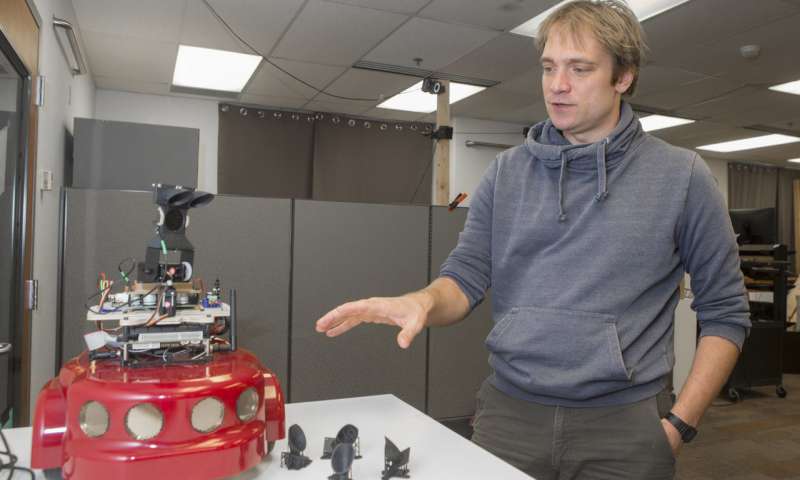James Webb Space Telescope (JWST) is one of the most significant and challenging engineering applications. It is projected to cost around 9 billion dollars. JWST has been designed after a long process and being tested under space-like conditions.
The first attempt to get a patent for a telescope was tried in 1608 by a Dutch eyeglass maker named Hans Lippershey. After one year, this was heard by Galileo and he designed one for himself. He was the first known person who used it to observe space. Since that time, telescopes used in scientific research have evolved. At the time being, NASA with the cooperation of the European and the Canadian Space Agencies has been building James Webb Space Telescope which is scheduled to launch in spring of 2019. It will be the most powerful telescope ever in space unless Aliens have already built one.
The history of JWST goes back to the year of 1989, when a successor of Hubble Space Telescope was discussed in a workshop. The name of the telescope was decided in 2002 in the memory of James Webb, who was 2nd administer of NASA. The construction of certain parts of the telescope such as its science instruments and the primary mirror started in 2004. Final testing is expected to happen in December of this year and the launch to space will occur in Spring 2019 in French Guiana.

Image credit: Northrop Grumman, James Webb Space Station
Why do we need a telescope like that? Can’t we just keep using Hubble Space Telescope? Well, actually Hubble Telescope will still be in service. JWST is announced as the successor of Hubble Space Telescope rather than a replacement for Hubble Telescope. The observation capability of JWST will reach to the first (baby) galaxies and stars. The wavelength of the light that comes from these galaxies gets stretched along with the expanding Universe and becomes infrared. Hence, the largest space telescope will be able to observe mainly in the infrared range while Hubble can observe in the ultra-violet, visible and small portion of the infrared spectrum. Moreover, infrared can penetrate through cosmic dust so JWST will make us enable to see behind cosmic dust. JWST has a 6.5-meter diameter mirror that is larger than Hubble’s mirror, 2.4 meters in diameter. This larger mirror of JWST will collect more light beside higher resolution. Another difference between JWST and Hubble Telescope is the positions of the telescopes in space. This is because of the requirement of a cold place to obtain infrared light properly. Therefore, JWST will park in the second Lagrange point (L2), that is about 1.5 million km far from Earth. This distance is four times longer than the place (Moon) where the human being was able to reach ever. Unfortunately, this makes almost impossible to reach JWST for maintenance or repair once it parks in L2. Therefore, the impeccable design of JWST is crucial to functioning properly.

Source: NASA, James Webb Space Telescope (https://jwst.nasa.gov/comparison_about.html)
JWST has been built using cutting-edge engineering technologies to provide cutting-edge observations. JWST has a 6.5-meter diameter primary mirror which consists of 18 adjustable panels. Its large structure caused the engineering team to use special methods to reduce the weight of the structure of the telescope. Beryllium was used to construct the primary mirror since it is light and strong. The shape of each panel of the mirror is hexagonal, in that way one large mirror as a whole without gap becomes possible. The mirrors are coated with gold (almost 50 grams) to reflect infrared light well. JWST will carry four science instruments to take images and spectra of space objects: Near Infrared Camera, Near Infrared Spectrograph, Mid Infrared Instrument and Fine Guidance Sensors/Near-Infrared Imaginer and Slit-less Spectrograph. They will enable the infrared observation of space. The mirror and science instruments must be kept in cold area to provide infrared capability so they will be cooled to under 50 Kelvin by a large sunshield. The sunshield consists of five layers (named Kapton) which are separated by vacuum and coated with special materials. There will be over 300 degree Celsius between two sides of the sunshield. Also, its well-designed microshutters will provide more multi-object capability (up to 100 tasks simultaneously). Vibration, acoustic and cryogenic tests of JWST have been conducted. JWST will be folded up before the launch since it is too big and it will be unfolded when it arrives at the second Lagrange point. The telescope will be carried to out of the atmosphere of the Earth by an Ariane 5 ECA rocket and placed in the second Lagrange point, that is circa 1.5 million km far from Earth, after about-30-day travel. It will take around six months to be ready for the first science mission. The deployment of the telescope can be seen in the video below.
Source: James Webb Space Telescope Youtube Channel
JWST will capture images from 13.5 billion years ago so we will be able to see the first stars of the early universe. Furthermore, we expect that we will have information about the assembly of galaxies, the birth of stars and the atmosphere of the other planets in out of solar system. JWST will serve for many scientists and the information that will be obtained via JWST will help to understand this amazing universe. JWST is a very exciting project due to not only its contribution to science but also an engineering project which will be orbiting in the second Lagrange point of the universe to serve humanity. In a nutshell, a telescope that costs almost 9 billion dollars have been built and it will be sent somewhere we have never reached before. And for what? To be able to see “end” of the universe.
Note: This short text is a brief compilation of the information in the sources.
Sources:
https://www.jwst.nasa.gov/
http://sci.esa.int/jwst/
http://www.asc-csa.gc.ca/eng/satellites/jwst/
https://jwst.stsci.edu/








